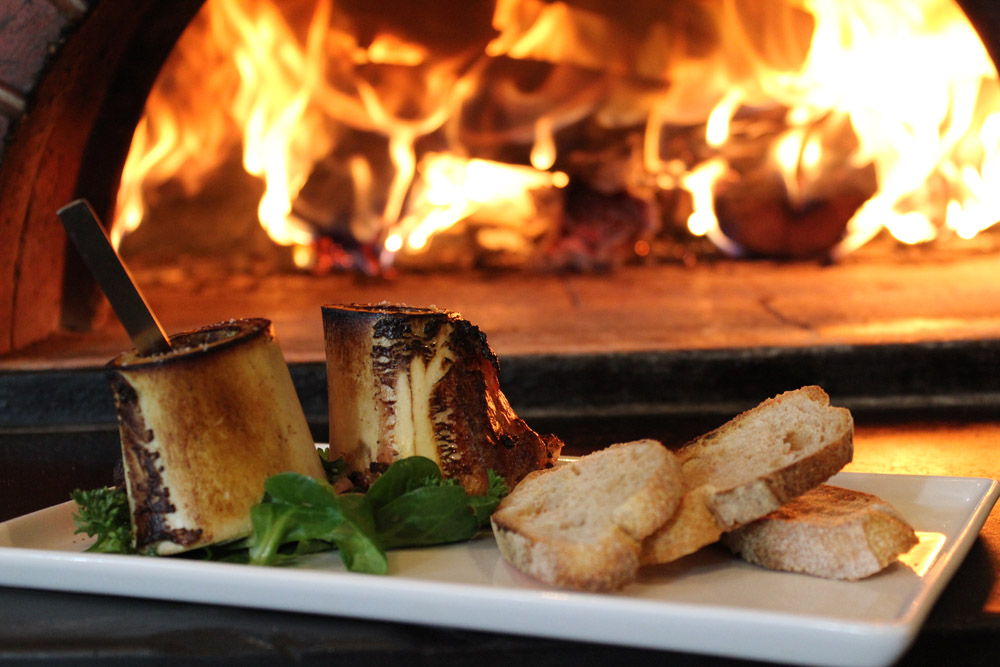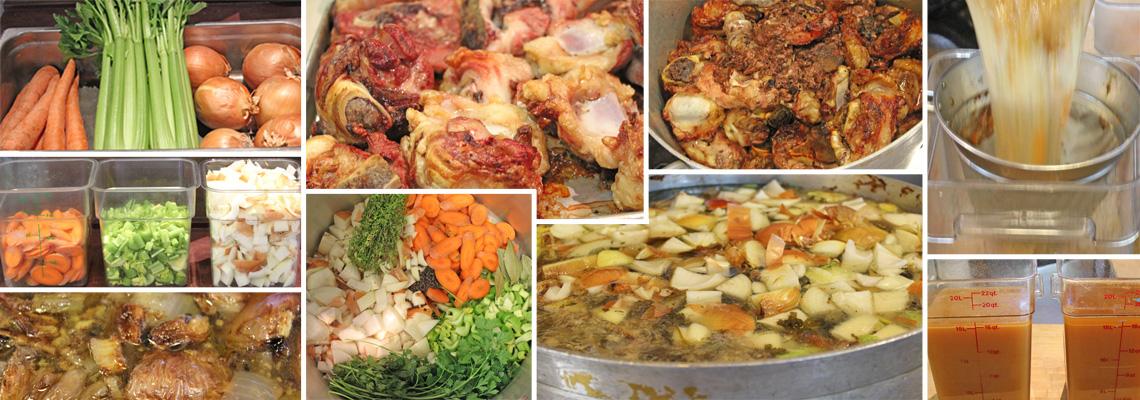Culinary stocks are a fundamental basic that all cooks should know and understand. If you're a home cook, a scratch made stock will quickly elevate your cooking to the professional level. If you're a professional cook, then there is no excuse to not be making your own stock.
In part one of our stock making podcast, we go over in detail how to make veal stock. Once you understand the finer points of making veal stock, you'll be able to quickly grasp the techniques and approaches used to create vegetable, chicken and fish stock, as discussed in part two of this series.
Details
Download & Listen To More Episodes
The Stella Culinary School Podcast is our core curriculum and the most effective method to gain knowledge and take your cooking to the next level. You can view and listen to all episodes by visiting the Stella Culinary School Podcast Index.
Subscribe to Podcast
There are 30 Comments

I've never used a multipot
I've never used a multipot for making stock before; they don't seem big enough in my opinion. It also might be a pain to hold the insert over the steaming pot as you let everything strain out. Give it a try and let me know if you like it better.

Mirepoix is just the standard
Mirepoix is just the standard version of aromatics placed in a stock. You can put almost any aromatic you want with the exception of leafy greens or a starchy root vegetable. Some ones to consider are lemon grass, ginger, galangal, tomatoes, mushrooms, bell peppers, etc. If they're just allergic to onions then I would consider other members of the Allium family such as garlic, leeks and shallots.
Chef, I just found your web
Chef,
I just found your web site, and let me say this is exactly what I have been missing. I have been looking for a site that teaches some of the basics, as well as the science behind cooking. I just finished your Stock's part 1 and have a question. You talk about taking some of your left-over Veal Stock and further reducing it and freezing it. What if you are not making it for a specific use, but want to make a batch to be used in the future? Can you freeze it as is in larger chunks, or do you need to reduce it down to freeze it? Also how long will the stock keep in the refrigerator?
Bill

Yes, you can freeze your
Yes, you can freeze your stock in large chunks. It will stay good for around three months in your freezer, but I would be surprised if you could make it that long without wanting to use it for something.
When ready to use, simply melt over a low flame in a heavy bottom stock or sauce pot until turns back into its liquid state. Once the stock is again liquid, turn the flame up to high, bring the stock to a boil, and use as necessary.
Glad you're enjoying the site!
Question about remiage...
Question about remiage... When you strain the stock and then add fresh mirepoix, do you also try and remove the old vege, or just leave it and move along?

Just leave it in and move on.
Just leave it in and move on. A lot of the time I'll transfer the cooked bones to a new pot which will leave most of the old mirepoix behind, but it's not a huge concern.

Hi Joe, pressure canning will
Hi Joe, pressure canning will work, but you need to have the PSI at or above 15, and keep the stock at temperature for at least 35 minutes. I have a large pressure canner that actually goes up to 20 psi and it's made specifically for canning. The extra PSI and time is just a precaution, but that's what I recommend to ensure safety.
Once pressure canned, simply store in a cool place out of direct sunlight and you'll be good to go. Glad you're enjoying the site. Let me know if you have any more questions.

Hi Alan, Try clicking the
Hi Alan,
Try clicking the play button twice. It's a glitch in the page code that I'm trying to fix, but if you click the play button twice, it should work. I also just added a download link under the "Further Information" section.
Let me know if you still have problems.

@AlexM, This is a good sign,
@AlexM,
This is a good sign, it means that you've made the stock correctly. When making the chicken stock, you're converting the collagen in the bones into gelatin. When the gelatin cools, the individual gelatin strands intertwine and form a gel (even if the stock doesn't turn solid, the gelatin matrix is still there). This gelatin matrix refracts light, which makes the stock look opaque or cloudy.
When the stock is melted back down, the gelatin matrix dissembles, which allows more light to pass through the now liquid stock, making it less opaque/cloudy.

Yep. Follow the exact same
Yep. Follow the exact same method for veal stock, but obviously use lamb bones instead.

I would recommend using lamb
I would recommend using lamb shanks.

Beef marrow bones are too
Beef marrow bones are too fatty for a traditional stock. You can try soaking the bones in ice water for about 20 minutes. This will loosen the marrow, and you'll be able to push it out of the bone with your finger.
You can then roast the bones and use them for stock, and reserve the marrow for something else.
However, marrow bones themselves don't have a whole lot of flavor. I think you'd be better off with other cuts like knucklele or neck bones.

The marrow bones I most
The marrow bones I most commonly refer to are beef marrow bones. They come from the femur portion. Here's a picture of our winter classic, fire roasted bone marrow...


Try a specialty butcher in
Try a specialty butcher in your area. Whole Foods is also pretty good for stuff like this; if they don't stock them, they can order them.
Also, you can find marrow bones like this in a lot of Mexican supermarkets since they tend to use them a lot in some soups.

If a vegetable stock doesn't
If a vegetable stock doesn't get any better with more than 1 hour simmering, why don't you add a mirapoix to your veal stock at the last 1 hour?
The flavor of your stock and ingredients will change as it cooks. Because you commonly want a bright, fresh vegetable flavor when making a vegetable stock, it's only necessary to simmer for one hour.
You reinforce the stock with fresh mirapoix while making a demi. What if I add more mirapoix to my stock at the beginning instead of reinforcing it later?
As mentioned above, flavors change as you cook the stock. I prefer to reinforce with fresh flavors at every stage of reduction. It's keeps the flavors fresh, and gives me more control. If you add a bunch of mirepoix up front, then all those flavors will meld during the reduction and concentrate.
Can I simmer my stock with a lid?
Yep, no problem.
My duck bones stock is super delicious, it doesn't even need much salt, I can eat it as a soup. My veal bones stock is not so tasty by itself, but is thick, brown and great in sauces. Is it normal, or maybe I do something wrong? I use femur veal bones (only available) snaping them so they fit into my home pot. Snaping the bones exposes the marrow, is it ok? In my restaurant i dont have to snap them for obvious reason, but maybe it is beneficial?
Duck tends to have a stronger flavor in general, so this is normal. Really the smaller the bones the better, because that leads to better extraction (more surface area). Marrow bones are good to a certain extent, but bone marrow is mostly fat, so you'll end up just skimming it off later any ways.





